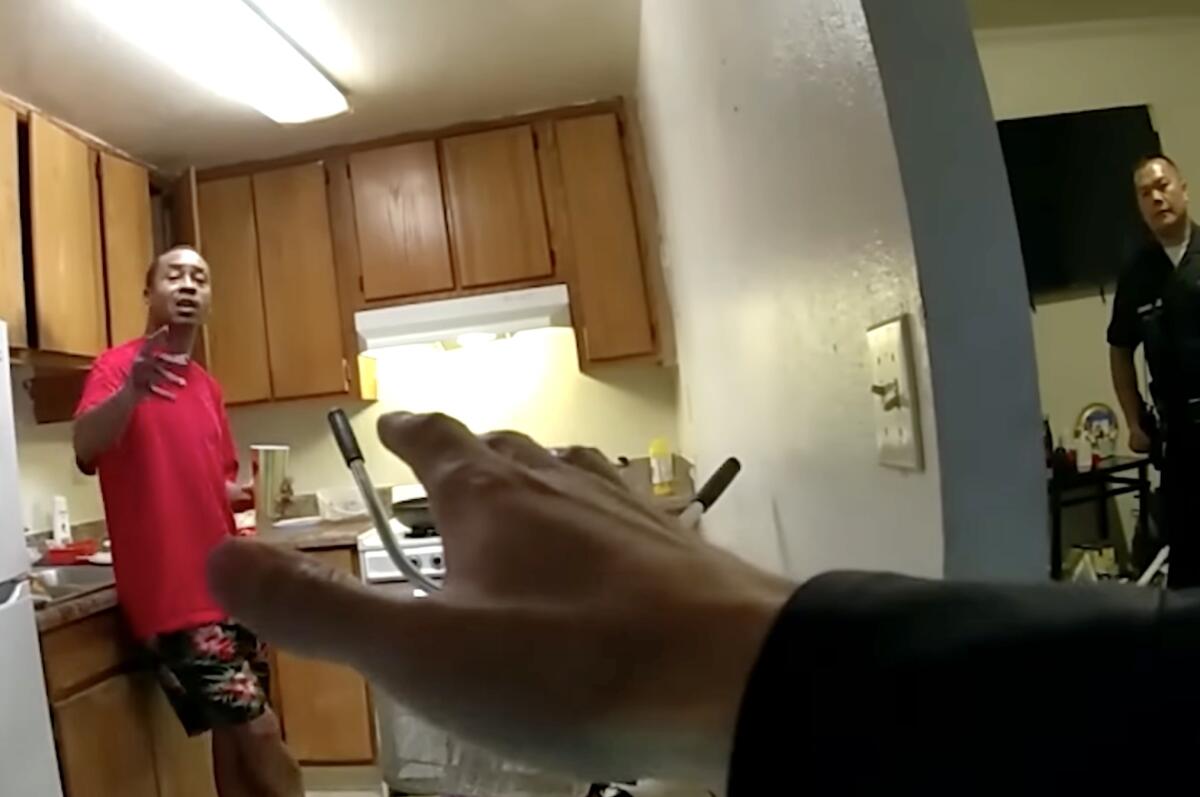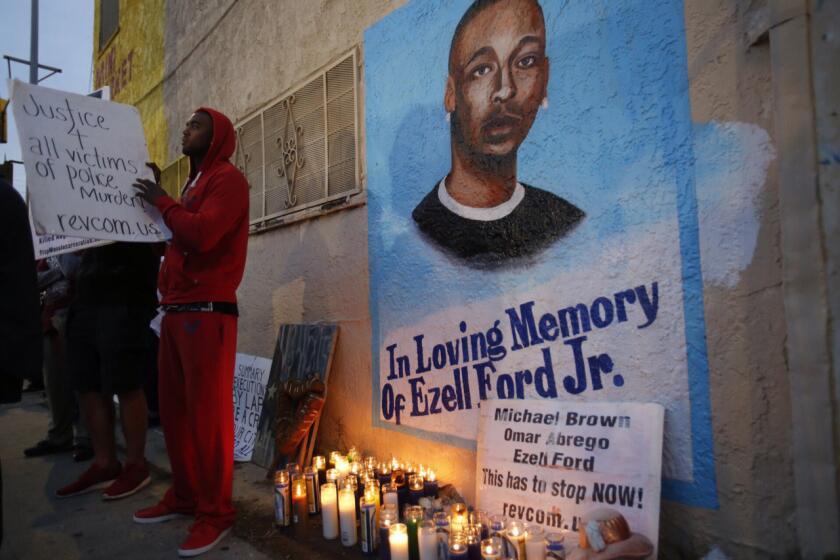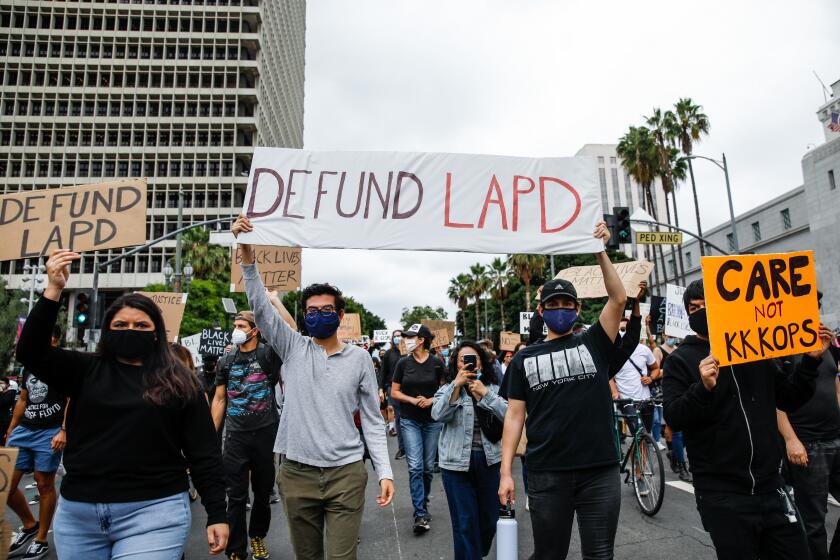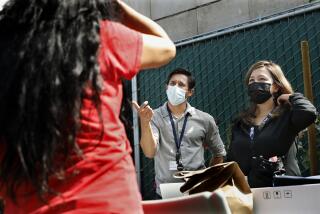Editorial: Three police killings in one week expose L.A.’s deadly response to mental health crisis

- Share via
At least a third of fatal police shootings involve victims who were in mental health crisis or impaired by substance use.
So it’s not surprising that there was evidence of psychosis or other problems that affected the behavior of the two men shot dead by Los Angeles police officers, and a third who died after being repeatedly stunned by officers, in the first week of 2023.
Not surprising, and not acceptable. The Los Angeles Police Department is supposed to be ready for these kinds of encounters, with training, tactics and procedures that diminish the chances that anyone — the suspect, the officer, bystanders — will come to harm. But officers still kill too many people in crisis.
Surely we can demand better of our police than the plethora of killings of African Americans.
That’s most achingly evident in the police killing of Takar Smith on Jan. 2. Body-cam video, released unusually early by Chief Michel Moore because of his concerns about all three cases, shows the final moments of the encounter with police and gives a hint of the danger at the scene, where Smith wielded first a chair and then a butcher knife.
But what troubled Moore, and what should trouble all of us, is not necessarily police conduct at the scene, but the fact that officers had advance notice that Smith was in the midst of a mental health crisis. His wife said so when she went to the Rampart station to report that he was violating a restraining order and would not leave the home. She told the officers who responded. They should not have entered the home without a mental health worker.
Mental health has been increasingly part of the police reform discussion, especially after high-profile police shootings of people who don’t respond the way officers expect, whether because of psychosis, intoxication or conditions such as autism and physical and intellectual disability.
Focus on mental health stepped up in Los Angeles following the fatal shooting of Ezell Ford, a mentally ill Black man whom police shot after stopping him for questioning in 2014. But the LAPD has had a Mental Evaluation Unit, with triage officers offering expertise, since 1948.
Defunding police is not a new idea, and it is not a panacea. It’s also not crazy.
And it now has in place SMART teams — Systemwide Mental Assessment Response Teams — that include county Department of Mental Health staff, who respond along with officers.
Three SMART teams were available at the time officers confronted Smith, Moore disclosed at a news conference Wednesday. But none were called.
Police and police critics alike argue, correctly, that we invest too little in mental and public health and leave police to handle issues that ought instead to be left to clinicians and peer counselors.
We have too few SMART teams, and too few county mental health workers available between 10 p.m. and 6 a.m., arguably the hours when they are most needed.
But we do have them. Failure to use them in this case, and presumably in other cases, puts added weight behind the movement for crisis responses that don’t include the police at all. That was part of the impetus behind 988, the crisis line unveiled last year as an alternative to 911. If built out as envisioned, the line will supplement on-the-phone counseling and treatment with mobile units of unarmed clinicians and crisis centers as alternatives to hospitals — or jails. California’s Miles Hall Lifeline Act was inspired by and named for a man who was shot dead by Walnut Creek police who were responding to his family’s call for assistance. There are too many similar cases, in which police responding to family calls to protect loved ones end up killing or maiming them.
Still, police will often be needed, even in the case of a mental health crisis. For example, Smith was allegedly violating a restraining order. Keenan Darnell Anderson, who died in the hospital Jan. 3 after being stunned with a Taser by LAPD officers, was allegedly involved in a car accident and wandering on foot into traffic. Oscar Sanchez, shot dead by police on Jan. 3, allegedly threw metal objects and threatened officers with a knife and a metal pole. In each case, it’s hard to see how unarmed mental health workers alone could protect the subjects, bystanders and themselves. Police won’t be able to simply outsource each case in which mental health is a factor. But at very least they can call in the SMART team.
But the crisis response problem is only the end of a long chain of failures. If Los Angeles and the rest of the nation had the robust behavioral health system that a complex society such as ours needs, incidents like these might have been avoided in the first place. A network of community clinics to identify and treat psychosis at its earliest stages, clinicians and counselors who can respond to emergencies, sufficient funding and medical insurance that adequately covers mental health care — all of these might have prevented the breakdowns that led to the deaths of Smith, Anderson and Sanchez.
Until we have those things, the onus remains on police, and the needless deaths are likely to continue.
More to Read
A cure for the common opinion
Get thought-provoking perspectives with our weekly newsletter.
You may occasionally receive promotional content from the Los Angeles Times.












